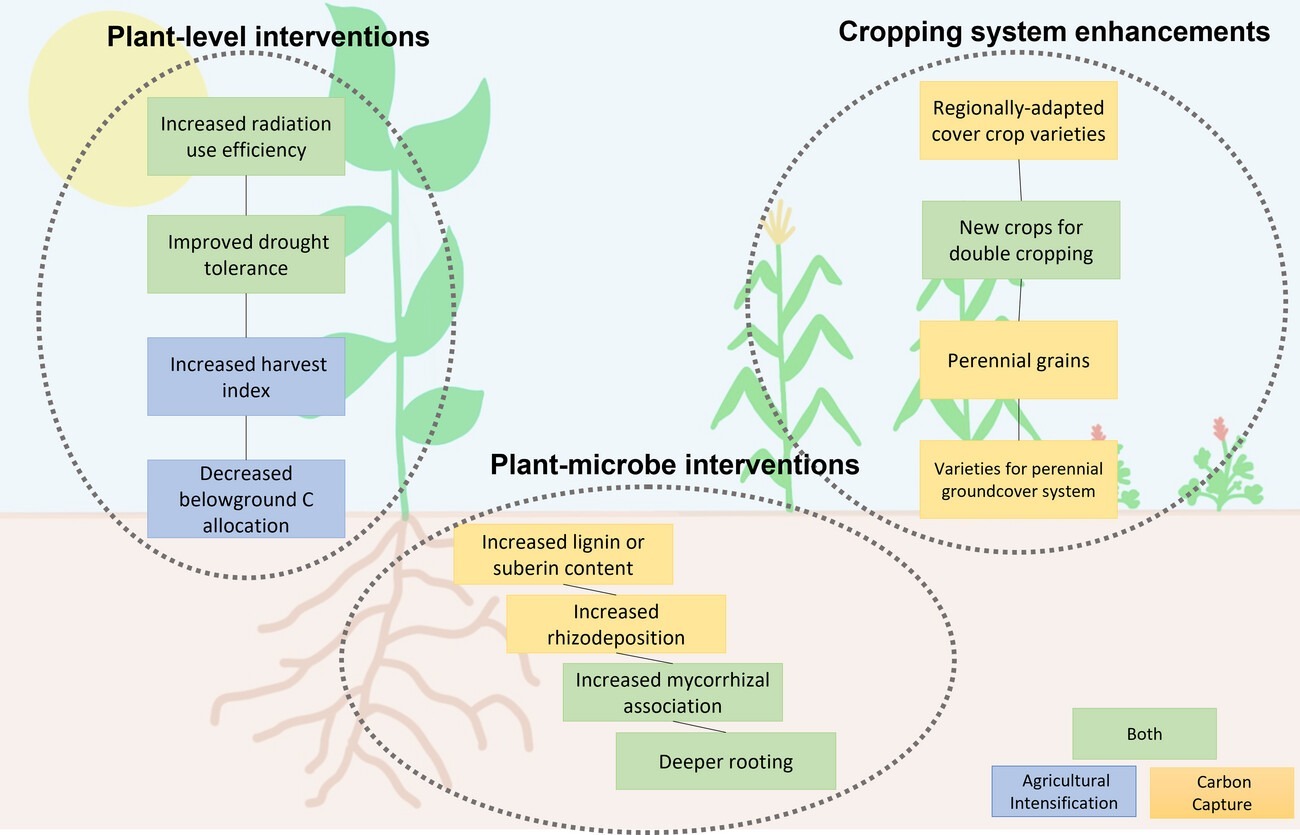Can Plant Breeding Help Store More Soil Carbon?
This article was adapted from an invited review in Crop Science titled “Contributions of plant breeding to soil carbon storage: Retrospects and prospects” published January 10, 2023.
The short answer: Historically, agricultural soils trend toward soil carbon loss, but a combination of plant breeding and management techniques can shift soils toward more carbon storage, according to this review by Poffenbarger et al.
Break it down: There are three main aspects to crop breeding and management which can affect the carbon content of the soil:

Diagram illustrating hypothesized breeding targets for soil carbon storage, agricultural intensification, and both. Figure provided by Hanna Poffenbarger.
- Plant-level intervention: Plants can be bred to “fix” more carbon, meaning that plant breeders can select for plants that more efficiently use the sun’s energy to grow. This could mean modifying the plant’s architecture to better capture sunlight or breeding plants for improved photosynthesis at the biochemical level, which could lead to more carbon added to the soil as crop residue. More crop residue leads to more carbon stored in the soil as organic matter.
- Whole-cropping system intervention: Breeding cover, double, and/or perennial crops to complement the main crop can return carbon to the soil and retain nutrients in the system.
- Plant–microbe interactions: Breeding crops with specific tissue chemistry or specialized root systems can lead to greater persistence and less microbial respiration of plant-derived carbon. That is, plant breeding can help decrease the amount of carbon lost to the atmosphere as microbes release carbon dioxide.
If you’re interested in breeding for soil-building benefits, look for genotypes with increased hardiness (e.g., better use of sunlight energy, drought tolerance, etc.), well-matched crops for practices such as double cropping, and deeper and more massive root systems, which add persistent forms of organic matter to the soil.
What has the research thus far shown?
- Changes in management techniques alone may increase soil storage up front, but this positive effect declines over time.
- Plant breeding has increased carbon inputs to the soil by corn and soybean but decreased carbon inputs to the soil by wheat.
- Gene-specific breeding can be difficult; genes can interact with each other, the environment, and management techniques in ways that are unforeseeable at the onset of breeding.
The takeaways: Plant breeders have the potential to increase crop productivity and positively impact global warming through plant breeding. Farmers, land managers, and CCAs will have unique opportunities to choose varieties and manage crops in a way that returns more carbon to the soil. Because agricultural soils have the potential to store up to 10% of global carbon emissions in the next 25 years, effective plant breeding can help decrease the presence of greenhouse gases without sacrificing yield or quality.
Photo courtesy of USDA NRCS Texas/Flickr.








